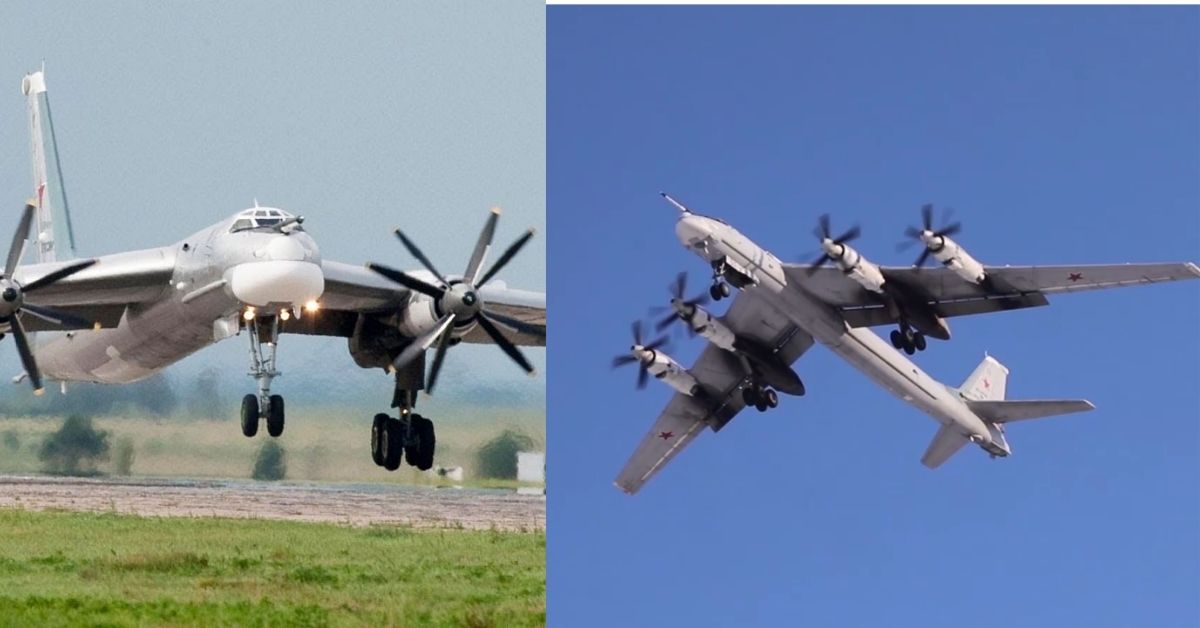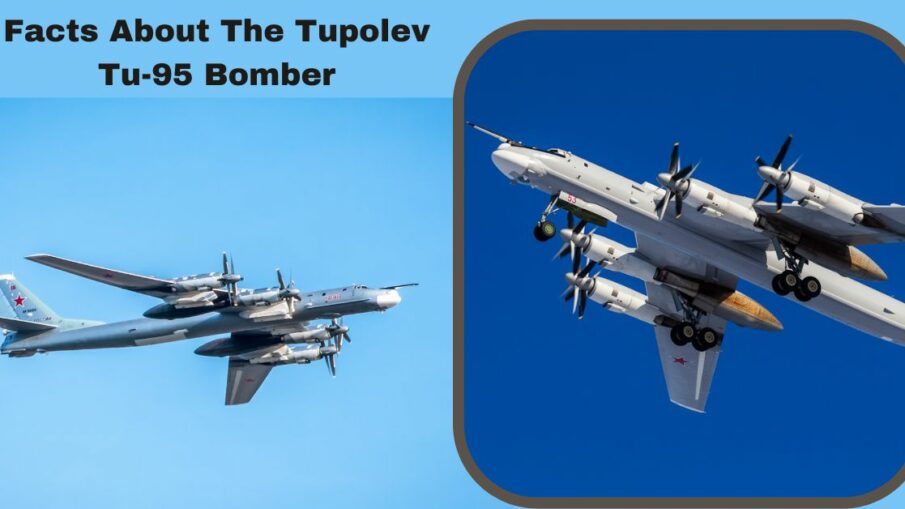The Russian Federation Air Force still uses the over 70-year-old Tupolev Tu-95 turboprop-powered strategic bomber in its operations. NATO has given the Tu-95, code-named “Bear,” the expectation that it will remain in Russian Air Force service until at least 2040.
The Tupolev Tu-95 underwent testing and development before being deployed by the Soviet Air Forces in 1956. However, it wasn’t until the Syrian Civil War in 2015 that the aircraft saw combat.
1. It Can Trace Its Roots Back to the Boeing B-29 Superfortress
When American World War One ace Eddie Rickenbacker made a contentious visit to the Soviet Union in 1943, the Soviet Union became aware of the Boeing B-29. Under the terms of the land lease agreement, the Soviet Union requested the B-29 from the United States, but their request was denied.
Then, on a day in 1944, a bombing raid over Manchuria damaged a B-29, forcing it to land near Vladivostok. One crashed and two made emergency landings during attacks over Japan, and three more B-29s shortly followed.
The Soviets kept the planes and urged the Tupolev Design Bureau to reproduce them, despite requests from the United States for their return. The end product was a modified B-29 known as the “Tupolev Tu-4.”
Acknowledging the inadequacy of the Tu-4 piston engines, they reconfigured the aircraft and installed four Kuznetsov-linked turboprops, each with a pair of contra-rotating propellers. Tu-20 was the original name of the aircraft, but Tu-95 eventually replaced it.
2. WWII Nazi Engineers Designed the Tu-95s Engines

You must understand Ferdinand Brandner in order to comprehend how Tupolev constructed the most potent turboprop engine ever. German immigrants from the Sudetenland raised Brandner in Vienna, Austria, where he graduated with a degree in engineering in 1925.
He started working for Humboldt-Deutz-Motoren AG designing locomotive engines after graduating. Brandner obtained employment at the Junkers-Motorenbau facility in Dessau when he joined the Nazi Party in the 1930s.
Brandner attempted to flee Soviet forces when Berlin fell in the spring of 1945, but he was apprehended while traveling to Prague. After realizing Brandner’s significance, Operation Osoaviakhim saw him transported to the Soviet Union with 2,500 other German scientists, engineers, and technicians.
The Soviets had a plan to deconstruct the BMW factory in Stassfurt and the Junkers facility in Dessau, then rebuild them in Kuibyshev, in the Soviet Union. Joseph Stalin desired a long-range bomber that could strike targets in the United States without refueling after World War II and the start of the Cold War.
Although Brandner and his German engineers first looked into jet engines for the Tu-95, they ultimately decided that turboprops would suffice to reach the necessary altitude.
3. Delivered the World’s Largest Atomic Bomb
The Soviet Union was going to explode the biggest nuclear bomb in history, the Tsar bomb, Nikita Khrushchev declared on October 17, 1961. Dropping the 26-foot-long and 6-foot-wide bomb, which weighed about thirty tons, on a target located within the Sukhoy Nos island test site in the Barents Sea was the plan.
The Tu-95 required major redesigns to its engines, bomb compartment, suspension, and release systems in order to accommodate the armament. A unique protective reflecting paint was also applied to the plane’s underside. The intended course of action was to drop the bomb while flying 34,449 feet (10,500 meters) over the test location.
The Tu-95 crew had hoped to escape the blast with a 17,000-square-foot parachute, so they equipped the Tsar Bomb with one. At 12,139 feet (3,700 meters), the bomb exploded, and the Tu-95 was 24 miles distant. The plane traveled 71 miles when the blast’s shock wave finally caught up with it, severely buffeting the aircraft but allowing it to land safely.
For access to additional factual information, please refer to the provided post below:
- Five Amazing Facts Regarding The Lockheed SR-71 Blackbird
- 5 Interesting Facts About The Boeing C-17 Globemaster III
4. One of the World’s Loudest Aircraft
The four Kuznetsov NK-12 engines on the Tu-95, as previously stated, each have two four-blade counter-rotating propellers. The propellers make an enormous amount of noise since their tips rotate faster than sound.
Because the plane is so loud, there is a rumor that the crew members who flew them all went deaf. The United States Navy reports that submerged submarines can hear a Tu-95 flying overhead on their passive sonar, producing sounds as loud as a rock concert.
Although it wasn’t always the case, the Tu-95 is currently the aircraft with the loudest noise while in use. The US Navy desired a fighter bomber in the 1950s that could launch off an aircraft carrier without using a catapult.
Their modification involved swapping the jet engine of a Republic XF-84H Thunderscreech for a 5,850 horsepower turboprop. People 25 miles distant from Edwards Air Force Base in California complained about the noise while the base was undertaking tests. In the end, the program was shelved, and the aircraft was never put into Navy service.
5. Used as an Airliner
The Soviet Union’s Air Ministry ordered the Tupolev Design Bureau to build an airliner with a 4,971-mile range in 1955. Having acquired the perfect aircraft, Tupolev modified a Tu-95 to create the Tupolev Tu-114 Rossiya. With 550 mph of speed at launch, the aircraft was the fastest propeller-powered aircraft in history.
The Tupolev Tu-114 Rossiya could accommodate 224 passengers and had a 5,560-mile range. At the time of its entry into Aeroflot service, the aircraft could accommodate 170 passengers together with 12 flight attendants and five crew members.
I hope that you find it to your liking. Please continue to follow Thegeofacts.com for further developments.


Leave a Reply